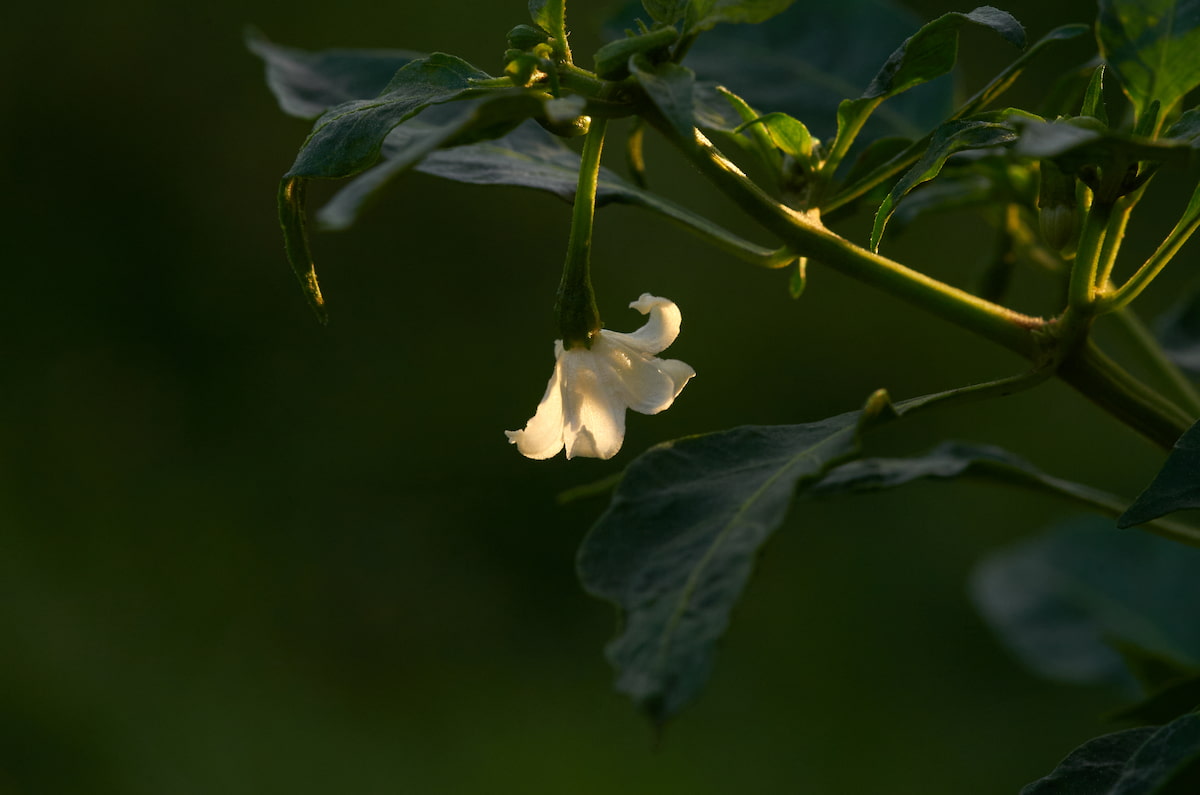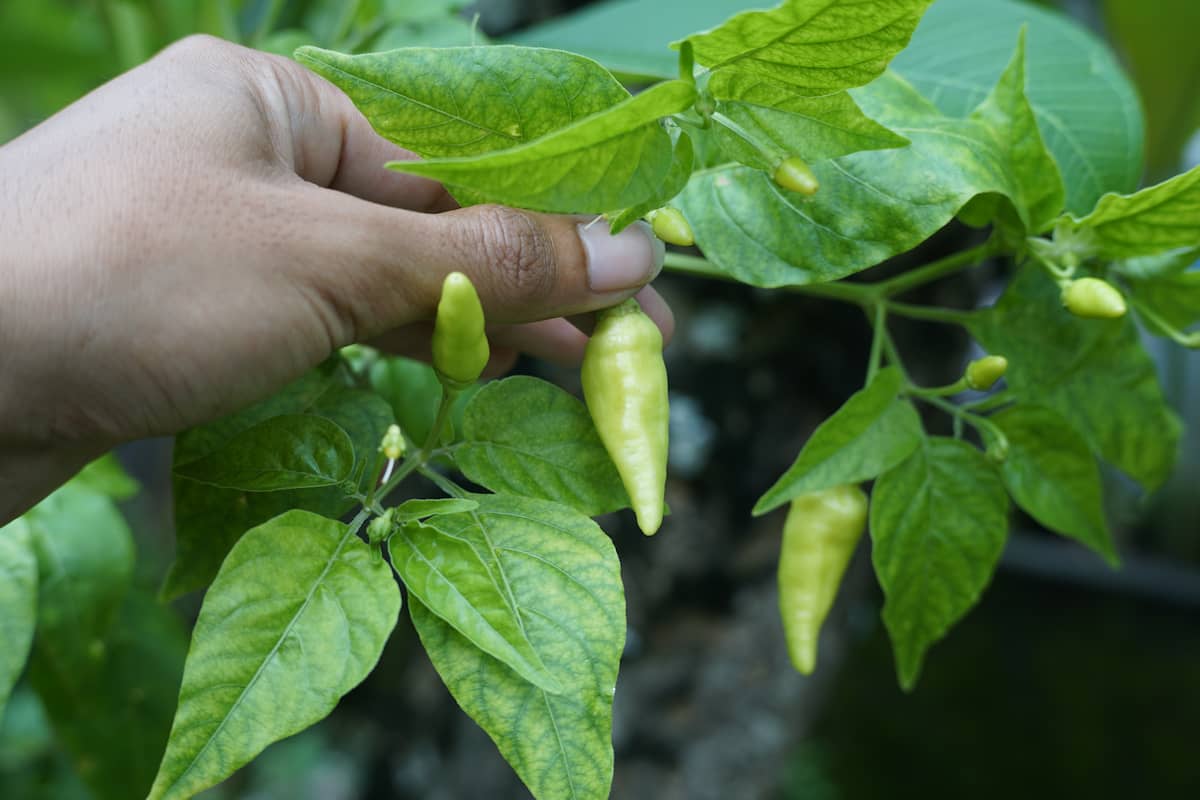Chilli peppers are a popular spice used in various cuisines worldwide. Interestingly, Chilli peppers have both male and female flowers. However, it is the female flowers that eventually give rise to the fruits that we consume. Female Chilli pepper flowers have a distinctive morphology characterized by a swollen ovary at the base of the flower.

The ovary contains the developing seeds and eventually matures into the fruit. On the other hand, male flowers have thin stalks and lack a swollen ovary. The number of male-to-female flowers can significantly impact the yield of Chilli peppers.
How to Increase Female Flowers in Chilli Peppers
Introduction to Chilli Peppers Cultivation
Chilli peppers are a widely cultivated crop known for their characteristic pungency and spicy flavor. They are a member of the Capsicum genus and are grown primarily for their fruit, which is used in culinary preparations worldwide. Chilli pepper cultivation typically requires warm temperatures, adequate moisture, and well-drained soil. The crop is often grown annually but can be grown as a perennial in areas with mild winters.
In addition to traditional field cultivation, Chilli peppers can be grown in a greenhouse or hydroponic system. Cultivating Chilli peppers requires careful management of pests and diseases, which can cause significant yield losses. Common pests include aphids, mites, and thrips, while diseases such as bacterial spots and powdery mildew can also affect the crop.
Integrated pest management practices, including biological control agents and resistant cultivars, can help minimize these issues. Harvesting of Chilli peppers typically begins when the fruits are mature and fully colored. The fruits can be harvested by hand or machine, depending on the scale of cultivation. Once harvested, Chilli peppers can be dried, frozen, or processed into various products, such as sauces and powders.
Understand the Anatomy of Chilli Pepper Flowers
Chilli peppers have various anatomical parts, including the peduncle, calyx, seeds, placenta, capsaicin glands, endocarp, mesocarp, exocarp, and apex. The peduncle is a branch that supports the flower, while the calyx is the base of the flower and is persistent in Chilli peppers. The seeds are rich in lecithin and contain no capsaicin. The placenta is responsible for metabolic exchanges between fruit and seed, while capsaicin glands produce the hotness.
The endocarp encloses the placenta and seeds, while the mesocarp provides structural support and contains most water content. The exocarp is the outer protective layer or peel of the fruit, and the apex is the tip of the fruit. Chilli pepper flowers are typically self-pollinating, and the fruit takes 3-4 weeks to ripen. Double or triple flowers are possible, with some species having more frequent occurrences.
Best Variety of for Cultivation Chilli Pepper
India’s cuisine is known for its distinct flavors and spiciness, with Chilli peppers being an essential ingredient in many dishes. Numerous Chilli peppers are cultivated in India, ranging from mild to extremely hot. Some of the hottest Chilli peppers in the world, such as Bhut Jolokia and Naga Morich, are grown in the Northeastern region of India. These peppers are used sparingly in cooking owing to their extreme heat. For milder flavors, there are varieties like Kashmiri Mirch, which is used for its bright color and flavor.
Sannam S4 and Byadgi are other Chilli pepper varieties that are moderately hot and known for their good yield and disease resistance and used in dried red Chilli powder. Teja, Guntur Sannam, and Jwala are other spicy and aromatic varieties for their unique flavors and heat. Some Chilli peppers, such as Bih Jolokia, Pusa Jwala, and Kandhari, have specific uses in the production of pickles and chutneys. Other varieties, such as Salem Gundu, Ramnad Mundu, Green Chilli, Surya, and Dhani, produce sauces, pastes, and powders.
Optimal Growing Conditions for Chilli Pepper
Chilli is a crop that thrives in warm, humid, yet dry weather, making it a tropical and sub-tropical plant. The temperature range between 20⁰-25⁰C is ideal for Chilli growth, while high temperatures of 37⁰C or higher can negatively affect crop development. Similarly, heavy rainfall can cause plant rotting, while low moisture levels during fruiting can result in flower and fruit drops. Black soil that retains moisture is ideal for rainfed Chilli crops, while irrigated crops need well-drained sandy loam with rich organic content.
The pH of the soil is 6.5 and 7.5, as acidic or alkaline soil is not suitable. Chilli can be grown as Kharif and Rabi crops, with sowing months ranging from May to February, depending on the region. Chillies are propagated from disease-free, good-quality seeds from certified organic farms or research institutes that develop high-yielding, disease-resistant varieties. In irrigated crops, watering should be done only when necessary to avoid the shedding of flowers and excessive vegetative growth.
In case you missed it: Chili Production Guide: A Step-By-Step Cultivation Practices

Chilli Pepper Flowering Stage
During the blooming flower stage, when the pepper plant is 3-4 months old, it requires more water and fertilizer to produce healthy fruits. The small white flowers develop into young green peppers that turn red when ripe. The fruit has a smooth texture and pointed tips, ranging from 2-8 inches long. Pest control measures must be taken to ensure a bountiful harvest. To improve yield, adjustments must be made to the garden.
Factors that Affect Less Female Flowers in Chilli Pepper
- High temperature
- Low humidity
- Lack of nutrients (nitrogen and potassium)
- Overfertilization (with nitrogen-rich fertilizers)
- Inadequate watering
- Pest damage (thrips and spider mites)
- Disease (fungal and bacterial)
- Genetics (varieties may naturally produce fewer female flowers)
- Poor soil quality
- Environmental stress (drought, floods, storms)
10 Simple Tips to Increase Female Flowers in Chilli Pepper
- Maintain Optimal Temperature: Keep the temperature between 20-25°C during the day and 15-20°C at night to ensure good flower development.
- Provide Adequate Humidity: Maintain humidity levels between 40-60% to prevent stress on the plant and promote flower growth.
- Use Nutrient-rich Soil: Use well-draining soil rich in nutrients such as NPK to encourage healthy flower development.
- Avoid Overfertilization: Overfertilization can lead to an increase in vegetative growth at the expense of female flowers. Use a balanced fertilizer and follow the recommended dosage.
- Consistent Watering: Water the plants regularly and ensure the soil contains moisture but is not waterlogged.
- Control Pests: Use natural methods or insecticides to control pests such as thrips and spider mites that can damage flowers and reduce the number of female flowers.
- Monitor for Disease: Regularly check for fungal and bacterial diseases and take appropriate action to prevent their spread.
- Choose the Right Variety: Select Chilli pepper varieties that are known to produce a high number of female flowers.
- Pruning: Prune the plants to promote air circulation and prevent overcrowding, which can negatively affect flower development.
- Provide Adequate Light: Ensure the plants receive sufficient sunlight or artificial light to promote flower development.
In case you missed it: How to Start Chili Pepper Farming in Florida: A Step-by-Step Growing Guide

Conclusion
Increasing the number of female flowers in Chilli pepper plants can significantly improve yield. By implementing the ten simple tips discussed, such as providing adequate nutrients, maintaining consistent watering, managing pests and diseases, and creating optimal growing conditions, growers can increase the number of female flowers and ultimately improve the overall health and productivity of their plants. It’s important to remember that a combination of factors can affect flower development and careful observation.
- Feed Your Flock for Less: Top 10 Tips to Save on Chicken Feed
- Ultimate Guide to Ossabaw Island Hog: Breeding, Raising, Diet, and Care
- Hatching Answers: The Top 10 Reasons Your Chickens Aren’t Laying Eggs
- Eggs and Economics: Breaking Down the Cost of Raising Backyard Chickens
- Defend Your Greens: Proven Methods to Keep Iguanas Out of Your Garden
- Ultimate Guide to Cinnamon Queen Chicken: A Comprehensive Guide for Beginners
- Ultimate Guide to California Tan Chicken: Breeding, Raising, Diet, Egg-Production and Care
- Ultimate Guide to Marsh Daisy Chicken: Breeding, Raising, Diet, and Care
- 10 Types of Chicken Farming Businesses You Can Start for Profits